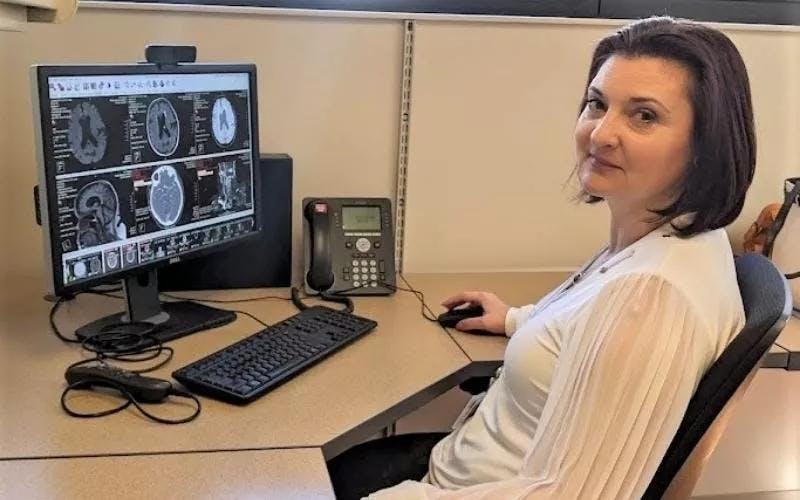People call them "mini strokes."
But they are not strokes at all.
The actual name for these events is transient ischemic attack, or TIA. About a quarter of a million people a year in the U.S. experience these potentially very dangerous episodes.
What happens when you have a TIA? What are the symptoms? Do you need to do something if you experience one? (Spoiler alert: YES.)
Here are five things you should know about TIAs, from Dr. Carolina Harbert, a board-certified neurologist at WellSpan. WellSpan has six stroke centers across South Central Pennsylvania that all have received prestigious designations for expertise in stroke care and quality in patient outcomes.
What happens during a TIA
During a TIA, you experience a temporary reduction of blood flow in the brain.
"A TIA is a big warning sign that a stroke might be ahead," Dr. Harbert said.
In fact, a third of people who have had a TIA go on to have a stroke within a year. The highest risk of having a stroke after a TIA is within the next 48 hours. (It's important to also note that people can have a stroke without having a TIA.)
Who is at risk
Those most at risk for a TIA and stroke include people who have high blood pressure, high cholesterol, poorly controlled diabetes, an irregular heart rhythm such as atrial fibrillation, and sleep apnea. Smoking also puts you at higher risk, as does age, starting at about 60.
Physicians use something called the ABCD2 score, which stands for age, blood pressure, clinical features, and duration/diabetes, to determine a person's risk for having a stroke after a TIA.
The symptoms
A TIA can cause the sudden onset of unexplained symptoms such as slurred or garbled speech, difficulty in finding words, nonsensical speech, unsteady walking, vision problems or temporary blindness, numbness and weakness on one side of the body, problems with hand coordination, and dizziness.
"These symptoms can happen suddenly or develop over a few minutes and may last a few minutes to a few hours up to 24 hours." Dr. Harbert said.
Because the symptoms often last a short time, people often dismiss them, thinking maybe they were just tired, did not eat well or drink enough, overexerted themselves, or perhaps just had a dizzy spell.
Dr. Harbert says it is important not to dismiss these warning signs. Get to the hospital immediately for assessment, testing, and treatment.
The tests
Physicians use different imaging tests to identify people with strokes. They use a CT scan of the head, blood vessel imaging to check the vessels in the head and neck, and an MRI of the brain.
"If we do not see any evidence of acute stroke on the MRI of the brain then you did not have a stroke. You had a TIA," Dr. Harbert says.
If you did not have a stroke, but you do have risk factors for stroke, further treatment can be lifesaving.
If you have a TIA
If physicians determine you had a TIA, they will help you immediately address your risk factors to prevent an actual stroke. This might include prescribing medications for blood pressure, cholesterol, or diabetes. They also will help you improve your diet, quit smoking, or get treatment for sleep apnea.
They also will prescribe anti-platelet medications which make your blood less "sticky" by preventing certain blood cells, called platelets, from forming clots or from building up on the inner surface of the injured blood vessels.
The important thing is not to ignore the symptoms of a TIA.
"The increased risk of stroke after a TIA extends up to a year," Harbert said. "That's why it's so important to do the proper work-up. We can determine if you are at risk for a stroke."
"Don't wait to get help. Come to the emergency department and get checked. We can help you prevent a devastating problem down the road."
For more information on WellSpan's award-winning stroke care, go here.
Tags:

